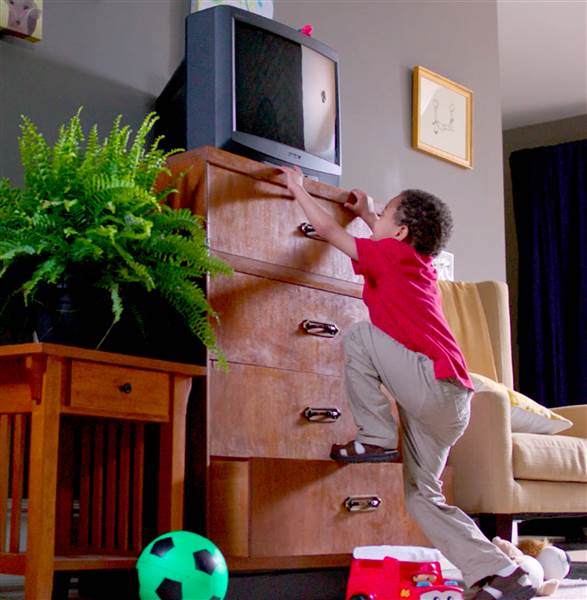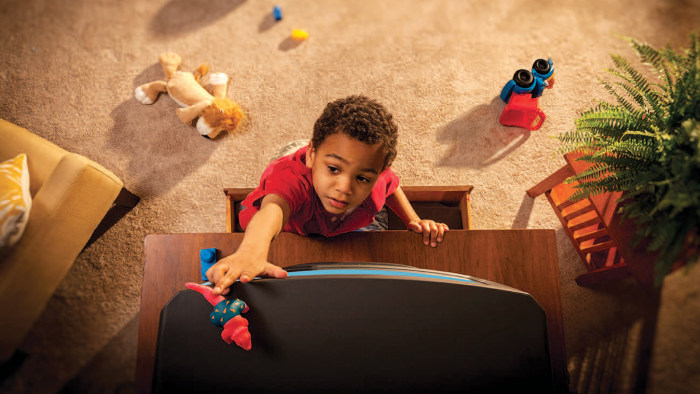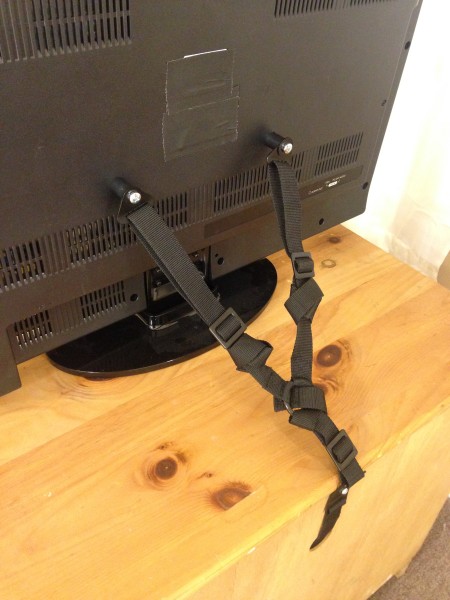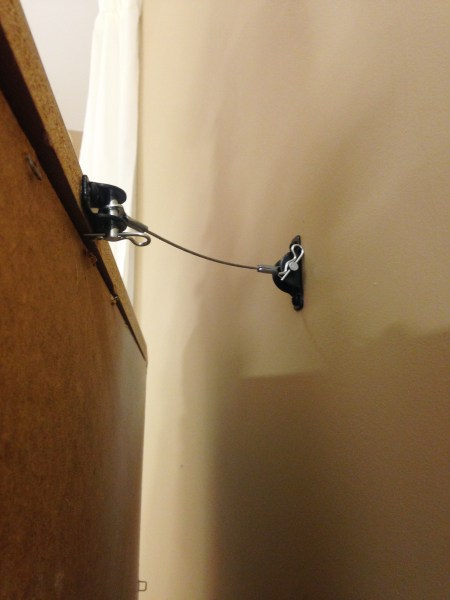Study finds toppling TV sets are injuring more kids

Toronto researchers found that toddlers between the ages of 1 and 3 years often suffered neck and head injuries, which could be fatal, according to the report published in the Journal of Neurosurgery Pediatrics.
“As a hazard in the home, it’s the perfect storm,” says the study’s lead author, Dr. Michael Cusimano, a professor of neurology, education and public health at the University of Toronto and a neurosurgeon at St. Michael’s Hospital. “Kids are left unsupervised around a big television that is not properly secured. And the numbers are going up. Between 2006 and 2008 there were 16,500 injuries and between 2008 and 2010 there were 19,200. If you look at the sales of these TVs there’s a parallel increase.”
To get a better sense of the cause of the accidents and how they might be prevented, Cusimano and his coauthor scoured the medical literature looking for studies that examined injuries caused by TVs. One of the most telling statistics they found was that 84 percent of the injuries occurred at home and three-fourths of them had not been witnessed by adult caregivers.
 Consumer Product Safety Commissi
Consumer Product Safety Commissi
“I think there are things you can do to the television; things you can do to the environment; and things you can do to the kids and parents that would make everything much safer,” Cusimano says. “For example, you can have restricted play areas away from the TV if you have little kids around the home.”
It’s not unusual for a curious child to climb up onto a piece of furniture that holds a TV, Cusimano says. The child can knock the TV off balance and it comes crashing down on the kid’s head.
“People have done the physics,” Cusimano says. “With the heaviest TVs falling a meter onto a small kids’s head is equivalent to the child falling 10 stories. These can potentially be fatal injuries.”
As for environmental changes, Cusimano suggests that people mount TVs on the wall, or if they can’t do that, secure the TV to the furniture it’s sitting on. “There are lots of things you can do immediately,” he adds. “Use proper furniture for the TV. Set it back so it’s not near the edge where its center of gravity will make it unstable. And use lower stands.”
The problem goes beyond TVs, says Scott Wolfson, communications director for the U.S. Consumer Products Safety Commission. “If you also bring in furniture components, there are some very compelling statistics,” he says. “A child dies every two weeks in this country from a tipover incident involving a TV, a piece of furniture, or a TV and a piece of furniture. Every 24 minutes a child is admitted to the emergency room because of a TV and/or a furniture tipover.”
 Consumer Product Safety Commissi
Consumer Product Safety Commissi
A big part of the problem is families moving older sets onto pieces of furniture that were not designed to hold a TV, Wolfson says. The safest choice is to mount the TV on the wall, whenever possible. Those that have to be placed on a stand need to be anchored, Wolfson says.
“It just takes five minutes to anchor TVs and furniture to the wall,” Wolfson says. “The consequences of children playing and climbing on unstable, unanchored furniture are tragic.”
 Consumer Product Safety Commissi
Consumer Product Safety Commissi
There are currently many choices for anchoring TVs and furniture, Wolfson says. “The solution is so simple,” he adds. “There are straps that can be easily purchased to anchor to the wall. There are L-brackets and tethering devices.”












